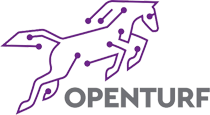The digital world has shifted. We’ve moved from monolithic applications to complex, distributed systems built on microservices, containers, and serverless functions. This new reality has made traditional monitoring tools feel like a relic of the past. Collecting logs, metrics, and traces from hundreds of services, often across multiple cloud providers, is a logistical nightmare. It creates vendor lock-in and a fragmented view of system health.
OpenTelemetry (OTel) is an industry-wide initiative to standardize how we instrument, generate, collect, and export telemetry data. The goal is simple: give developers and SREs a single, open standard that works everywhere, freeing them from the constraints of proprietary solutions. This is how OTel is becoming the de facto standard for observability in a cloud-native world.
Why OpenTelemetry Matters Now More Than Ever
Many organizations were still using a mix of proprietary agents and custom-built scripts. The conversation was about which vendor had the best dashboard. Today, the conversation has fundamentally changed.
1. Eliminating Vendor Lock-in: OTel decouples instrumentation from the backend. You can instrument your application once using the OTel SDKs and send that data to any compatible observability backend—whether it’s a commercial tool like Datadog or a popular open-source solution like Prometheus. This gives you the freedom to choose the best tools for your needs without having to re-instrument your code. This flexibility is a game-changer for businesses.
2. A Single Standard for All Telemetry: OTel unifies the three pillars of observability: metrics, logs, and traces. Previously, you might have used a separate agent for each. OTel provides a single set of APIs, SDKs, and collectors to handle all three. This simplifies your architecture, reduces operational overhead, and ensures a consistent view of your system health.
3. The Rise of the OTel Collector: The OTel Collector has become a central hub for telemetry. It’s a powerful and flexible agent that can receive, process, and export data. It can also act as a translation layer, ingesting data in proprietary formats and exporting it as OTel data, helping companies migrate off legacy systems in a phased manner.
Real-World Examples
A large-scale e-commerce company uses a mix of services on AWS, a few legacy microservices on-premise, and some serverless functions on Google Cloud. They’ve struggled with a unified view of their system.
Before OTel: The engineering team had to deploy multiple proprietary agents for each service. The data would go to different vendors, and the SRE team had to manually correlate issues across dashboards. A service slowdown on AWS might be a database latency issue on-premise, but it was difficult and time-consuming to prove it.
With OTel: They instrumented all services using the OTel SDKs. Now, all logs, metrics, and traces are collected by OTel Collectors and sent to a single observability backend. When a service slows down, an SRE can immediately see the trace showing the full request flow, from the user hitting the frontend service on AWS to the database call on-premise. They can instantly see which part of the chain introduced latency, regardless of the underlying infrastructure.
What’s happening now
- Ubiquitous Adoption: Major players are embracing OTel as the default standard. Frameworks and libraries are starting to ship with OTel instrumentation out-of-the-box, making adoption nearly effortless.
- AIOps Integration: OTel is becoming the critical data source for GenAI-powered AIOps systems. The standardized, structured nature of OTel data makes it the ideal input for large language models to perform sophisticated analysis and automated remediation.
- Security & Reliability Focus: As OTel matures, there’s a growing focus on integrating security signals and reliability metrics directly into the telemetry stream. This allows for a more holistic view of system health and security posture from a single pane of glass.
OpenTelemetry has moved beyond a promising open-source project to become a fundamental pillar of modern software architecture. It’s solving the hard problems of vendor lock-in and fragmented telemetry data, enabling organizations to achieve true end-to-end observability in a cloud-native world. By providing a single, flexible standard, OTel empowers teams to focus on innovation, not instrumentation, and lays the groundwork for the next generation of AI-powered IT operations. The future is open, and it’s built on OTel.
